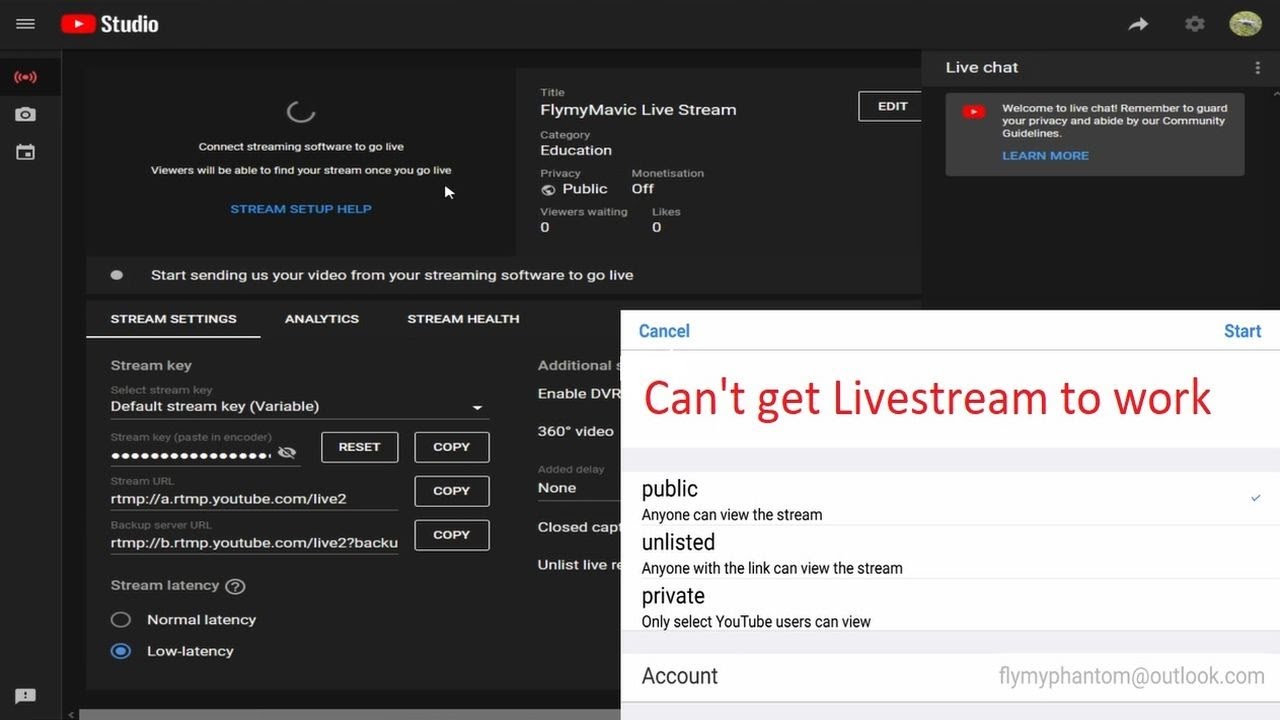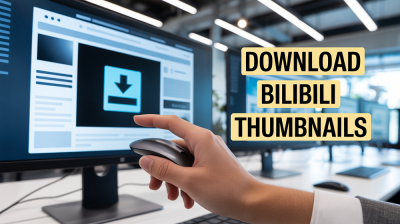Introduction to a.rtmp.youtube.com/live2

Welcome to the world of streaming! If you're a streamer, you've likely stumbled upon the URL a.rtmp.youtube.com/live2. This is more than just a web address; it's a vital gateway that connects you to YouTube's vast audience. But what does it mean? In simple terms, this URL serves as a server endpoint where your live stream is sent before it's delivered to viewers. Understanding this URL can help you optimize your streaming setup and ensure a seamless broadcasting experience. So, let’s dive into what it really is and why it matters!
Also Read This: How to Upload a Facebook Video to YouTube: A Quick Method
What is RTMP and Its Role in Streaming?

RTMP, short for Real-Time Messaging Protocol, is a protocol developed by Adobe for high-performance transmission of audio, video, and data over the Internet. If you think of it as the delivery truck for your streaming content, it’s crucial for transporting your stream from your broadcasting software to platforms like YouTube. Here’s why it’s essential for streamers:
- Low Latency: RTMP is designed for real-time streaming, ensuring that your live broadcasts have minimal delays. This is especially important in interactive streams, where viewer engagement is key.
- High Quality: It supports high-quality audio and video, allowing you to deliver crisp visuals and clear sound to your audience.
- Adaptive Bitrate: RTMP can adjust the streaming quality based on the viewer’s internet speed, ensuring a smooth viewing experience even on slower connections.
So, how does a.rtmp.youtube.com/live2 fit into this? When you set up your live stream, this URL is where your streaming software (like OBS or Streamlabs) sends your video feed. Upon receiving it, YouTube encodes and distributes it to viewers. This process involves several steps:
- Connection: Your streaming software connects to the RTMP server at
a.rtmp.youtube.com/live2. - Stream Key: You provide a unique stream key, which acts as a password that links your broadcast to your YouTube channel.
- Encoding: YouTube receives the feed, encodes it, and then sends it out to your audience.
In summary, RTMP is the backbone of live streaming, and the a.rtmp.youtube.com/live2 URL is your entry point into the vibrant world of live content on YouTube. Understanding this URL and the RTMP protocol equips you with the knowledge to enhance your streaming experience, making it more engaging for your audience. So next time you go live, you’ll know exactly what’s happening behind the scenes!
Also Read This: How to Watch VR YouTube Videos Easily
3. Decoding the a.rtmp.youtube.com/live2 URL Structure
When we talk about the a.rtmp.youtube.com/live2 URL, it's essential to break down its structure to understand its significance fully. This URL is part of YouTube's Real-Time Messaging Protocol (RTMP), specifically designed for live streaming. Let's dissect it:
- a.rtmp.youtube.com: This is the server address where your streaming data is sent. The 'a' prefix indicates that it's part of a larger cluster of servers, enhancing reliability and performance.
- /live2: This segment specifies the stream type. In this case, 'live2' denotes the second version of live streaming, which is optimized for current streaming technologies.
When streamers connect to this URL, they essentially create a bridge between their broadcasting software and YouTube's servers. The URL acts as the entry point for the data, which includes video and audio feeds. The typical format of a complete streaming URL looks something like this:
a.rtmp.youtube.com/live2/{stream_keycode>Here, the {stream_keystrong> is a unique identifier assigned to each stream. It ensures that your content is sent to the correct destination on YouTube's platform. Without this key, your stream cannot be identified, and therefore, cannot be broadcasted.
Additionally, it's worth noting that the RTMP protocol is designed for low-latency streaming, which is crucial for live interactions like gaming, webinars, or real-time events. The structure of the URL is not just about connectivity; it's about ensuring that streamers can engage their audience with minimal delays.
Also Read This: Can You Upload Two Videos at Once on YouTube? Everything You Need to Know
4. How Streamers Use the a.rtmp.youtube.com/live2 URL
Streamers leverage the a.rtmp.youtube.com/live2 URL as a vital tool for broadcasting their content to audiences worldwide. Here's how they typically use it:
- Connecting Broadcasting Software: Streamers use software like OBS Studio, XSplit, or Streamlabs. Within these platforms, they'll input the a.rtmp.youtube.com/live2 URL along with their unique stream key to establish a connection.
- Configuring Settings: Before going live, streamers customize their settings, such as resolution, bitrate, and frame rate, ensuring optimal quality. The URL facilitates real-time adjustments during the stream, allowing for dynamic content delivery.
- Audience Engagement: Utilizing the RTMP protocol allows streamers to interact with viewers in real-time via chat. This interaction is crucial for building community and keeping audiences engaged.
- Monetization Opportunities: By streaming through this URL, content creators can take advantage of YouTube’s monetization features, such as super chats and memberships, enhancing their revenue streams.
Additionally, the a.rtmp.youtube.com/live2 URL is equipped to handle multiple streams simultaneously. This means that even if one server goes down, YouTube's infrastructure can seamlessly redirect streams to other available servers without interrupting the broadcast.
In summary, the a.rtmp.youtube.com/live2 URL plays a pivotal role in the streaming ecosystem on YouTube. Streamers rely on it not just for connecting their content but also for engaging with their audience and optimizing their broadcasts. Understanding its structure and functionality can empower content creators to make the most of their live streaming experiences.
Also Read This: How to Check If a YouTube Channel Is Monetized
5. Common Issues and Troubleshooting Tips for Streamers
Streaming on platforms like YouTube can sometimes feel like navigating a maze, especially when technical hiccups arise. Let’s talk about some common issues you might encounter with the a.rtmp.youtube.com/live2 URL and how to troubleshoot them effectively.
- Connection Errors: If you're facing connection problems, first check your internet speed. A stable connection is crucial, so consider using a wired connection instead of Wi-Fi for more reliability.
- Stream Key Issues: Ensure that you’re using the correct stream key. This key is unique to your channel and can change if you regenerate it. Double-check it in your YouTube settings, and make sure it matches what you have in your streaming software.
- Latency Problems: If your stream has noticeable delays, try adjusting your latency settings. YouTube offers different latency options—consider using “Low Latency” for real-time interaction during live chats.
- Video Quality Issues: Struggling with video quality? Make sure your encoding settings are optimized. For instance, a bitrate of 4500 to 6000 kbps is generally recommended for 1080p streaming.
- Audio Sync Issues: If your audio and video aren't in sync, this can often be fixed by adjusting the audio buffer settings in your streaming software. Check for any settings related to audio delay and fine-tune them as needed.
In addition to these troubleshooting tips, always keep your streaming software updated and familiarize yourself with its documentation. Many problems can be resolved by simply reading through guides and FAQs provided by the software developers.
6. Best Practices for Optimal Streaming Performance
To ensure your streaming experience is smooth and enjoyable for both you and your viewers, it’s important to adopt some best practices. Here are a few tips that can significantly enhance your performance:
- Test Your Setup: Before going live, conduct a test stream. This allows you to check your video and audio quality, ensuring everything is functioning as it should without unexpected surprises.
- Optimize Your Encoding Settings: Use an encoding preset that balances quality and performance. For instance, the “x264” preset is a popular choice for many streamers, but adjusting it based on your computer’s capability can make a difference.
- Monitor Your Stream Health: Utilize tools provided by YouTube, like the "Stream Health" indicator. This feature gives you real-time feedback on your stream quality and alerts you to any issues.
- Engage with Your Audience: Encourage interaction during your live streams. Respond to comments and questions in real-time. This not only keeps your viewers engaged but can also help create a vibrant community around your channel.
- Plan Your Content: Having a clear agenda can help keep your stream organized. Prepare topics in advance, but also be flexible enough to adapt to viewer interactions.
By implementing these practices, you can elevate the quality of your streams, ensuring they are not only enjoyable but also professional. Happy streaming!
 admin
admin








